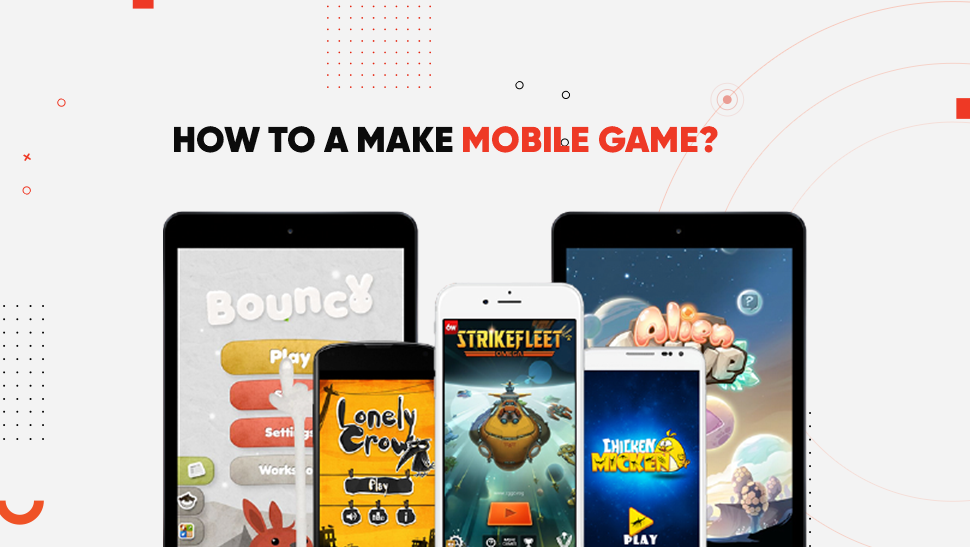There are several essential steps to design, create, and deploy your own mobile game for smartphone users. With user demand at an all-time high, there has never been a better time to get started with mobile app development. In fact, the industry is slated to grow by nearly fifteen-percent in 2021.
As a tech enthusiast, building your own smartphone game enables you to work in a growing industry and get paid for doing what you love. Simultaneously, these opportunities empower you to challenge yourself with a constant learning curve and grow in a fast-paced, dynamic working environment.
To help you get started, read on to learn about how to create your own mobile game for smartphone users.
Define Mobile App Genre
First and foremost, define the genre of your smartphone mobile game. Generate a clear understanding of what type of game you will be making. Some of the most popular types of smartphone games include puzzles, racers, or role-playing simulation (RPS) applications. In addition, look into building first-person shooter (FPS), adventures, or strategy games. If you have a specific expertise in a technical field of study, you may want to build an educational mobile application as well. Other popular formats include productivity and other online hunting games. Certainly, application genre definition is a key first step to create your own mobile game from scratch.
Select What Type Of App To Build
Next, choose what type of smartphone mobile application you will be building. There are three primary types of mobile apps. Native apps, which are often faster to develop, are built for one specific operating system (OS) or platform. Similarly, you may want to look into programming a web application. These function essentially as responsive versions of actual websites. Building in this format, your game can operate seamlessly on any device or OS. If neither of these suit your needs, a hybrid application may be your best bet. Essentially, these are combinations of the two alternate frameworks. Leveraging this approach, you can accelerate load times, simplify code maintainability, and minimize engineering expenses. Surely, it is important to determine what type of smartphone mobile game you will be developing.
Set Up Your Tech Stack
Once you have defined what your smartphone mobile game will look like, begin setting up your tech stack. Several advanced tools are required to successfully design, develop, and deploy a mobile game. For a start, use a container registry by JFrog to deliver efficient, reliable, and consistent access to your build ecosystem. Leveraging this tool, you can simplify access control, which is key to strengthen system security. At the same time, use these capabilities to scan for vulnerabilities, then make patches as needed. Indeed, tech stack configuration is a vital step to create a mobile game for smartphone users.
Outline Your Gameplay
Now, you are ready to define the gameplay of your smartphone mobile game. Start off by outlining your game mechanics. These refer to all interactions, controls, and abilities within the game. Similarly, they may also include your events, environments, and navigable vehicles. Then, specify your experience duration, which generally includes your core levels, missions, and average durations. Simultaneously, emphasize any ancillary or practical rewards that you want to include in your product. These often include anything from spectacular visual effects, game modes, and unlockable content. With all of these crucial aspects defined, wrap up by detailing your difficulty. Specifically, outline how hard it will be for gamers to complete missions, pass obstacles, and win awards.
Perfect Your Monetization Strategy
At this point, it is time to perfect your monetization strategy. One of the most popular ways to earn money from your mobile game is through ad monetization. This approach integrates relevant promotions into your game using native design and experience. If you do not want to overwhelm users with unavoidable advertisements, consider driving profits through in-app purchases (IAP). IAP refers to purchasing digital goods and services directly from your mobile app. Commonly, game developers implement these to monetize the cost of an extra life, cosmetic character item, or puzzle hints. In fact, you can even leverage these techniques to charge players for upgrades, or to speed up a task.
There are several important steps to create your own mobile game for smartphone users. First off, define the genre of your smartphone app. Some of the most popular formats include arcade, puzzle, and strategy games. Next, determine what type of program you will be building. With these critical aspects defined, begin setting up your tech stack. Now, you are ready to outline and strategically design your gameplay. At this point, it is time to perfect your game monetization strategy. Follow the points highlighted above to learn about how to create your own mobile game for smartphone users.

This is Rohan, I’m a Digital marketing Expert, Full time Content Writer and founder of BoxerTechnology.com I can help people across the world through my articles. I am sharing the latest stories from companies like Apple, Samsung, Google, and Amazon.




Leave a Reply